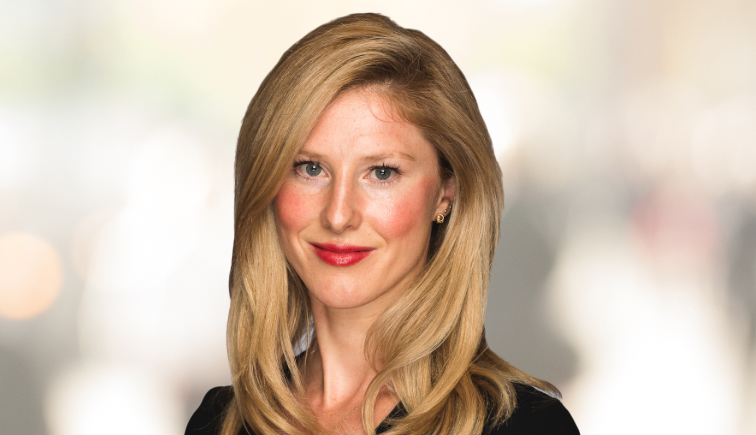The first half of the year has been a torrid time for investors as markets became increasingly volatile. Equities and bonds have suffered sharp falls, while inflation continued its upward trajectory, eroding any income that investors may have earned.
Now, with earnings season underway, it is evident the UK investment management sector is not immune to investor nervousness. Wealth firm Brooks Macdonald recently reported its funds under management (FUM) have taken a hit, while fund group Polar Capital has seen profits fall in its most recent trading statement.
Weathering the oncoming storm
More bad news could be in store from other investment firms as they post financial results in 2022. Given that Blackrock is something of a bellwether for the financial services industry, the news that its AUM fell to $8.5trn (£7.1trn) in the second quarter of 2022, a 15% decline from the end of 2021, suggests a longer-term trend at play.
Emma Wall (pictured), head of investment analysis and research at investment platform Hargreaves Lansdown, says: “It is fair to surmise that if the largest asset manager in the world is seeing the impact of market volatility, then the expectation is the rest of financial services – wealth managers and asset managers – will be going through a trickier time.”
Negative market movements dragged FUM lower at Brooks Macdonald, despite net inflows of £280m in its fourth quarter to 30 June 2022. The wealth manager saw FUM drop 5.9% from the £16.7bn recorded at the end of March 2022, and was 4.8% lower than the £16.5bn reported a year earlier. One bright spot is the firm has clocked up five consecutive quarters of inflows.
Retaining assets and clients
Wall observes that those wealth managers with products which offer good long-term performance, are likely to be more “sticky” when it comes to clients and assets.
“Yes, you will feel the impact of lower fee revenue because of less AUM because of a market slump. It doesn’t necessarily mean your business is permanently hampered,” she says.
“What’s important is retention of assets and retention of clients. Having fund flows is key, and there are some asset managers where we’re starting to see volatile fund flows, as well as volatile markets.”
Notably, Blackrock still managed to attract $90bn in net inflows during its most recent quarterly reporting period, with ETF business iShares generating much of that.
However, Chris Beauchamp, chief market analyst at trading platform IG Group, explains there is “always reduced appetite to put money to work when markets are falling”.
“Potential flows are stymied as cash is left sitting in accounts waiting for a market turn. This time around, the picture is complicated by the squeeze on consumer spending, as a result of inflation and higher interest rates.
“Taken together, it looks to be a difficult period for the sector,” he notes.
Building longer relationships
Polar Capital’s fortunes have been rather mixed, given its exposure to and specialism in tech stocks, many of which have tumbled this year.
The firm’s pre-tax profit came in at £62.1m for the year ended 31 March 2022, an 18% decline from 2021’s £75.9m, as performance fees plunged 68%.
While net flows remained “resilient” for the full year, Polar Capital suffered its first quarter of net outflows, totalling £400m, in the last three months of that period.
Sophie Lund-Yates, lead equity analyst at Hargreaves Lansdown, says that as an asset management company, Polar’s fortunes “tend to wax and wane alongside the market”, and therefore a “less-than-stellar year was to be expected”.
The group has particular expertise in technology and healthcare, which account for 42% and 17% of assets under management, respectively. “That served it well, up until this year when the tech sector sold off in response to rising interest rates. The downturn hit performance fee profits, or those the group earns by outperforming benchmarks,” Lund-Yates explains.
However, Polar reported its total assets were boosted by seven segregated mandate wins over the year, which added £769m. It now runs £1.1bn in segregated mandates for clients, accounting for 5% of AUM, an area of growth Lund-Yates calls “encouraging”.
“Segregated mandates – funds run exclusively for a particular client – were responsible for the lion’s share of net inflows. This is a key growth area for Polar because [these mandates] tend to have a longer relationship,” she adds.
The road ahead
With some wealth managers still to report and others seemingly unaffected by the market movements, it might be too early to make predictions.
However, further consolidation in the market seems likely as some major wealth brands’ share prices are reduced to eye-catching levels.
As such, IG Group’s Beauchamp says he expects the sector to weather this period, “though times like this tend to make mergers more attractive in a bid to cut costs”.
Wall agrees: “Yes, we might see some more acquisitions but those might be among more stressed assets. It won’t be of a similar nature to what’s been going on in the past couple of years – it will be quite opportunistic, and it will only be by companies that have the cash to do it.”










